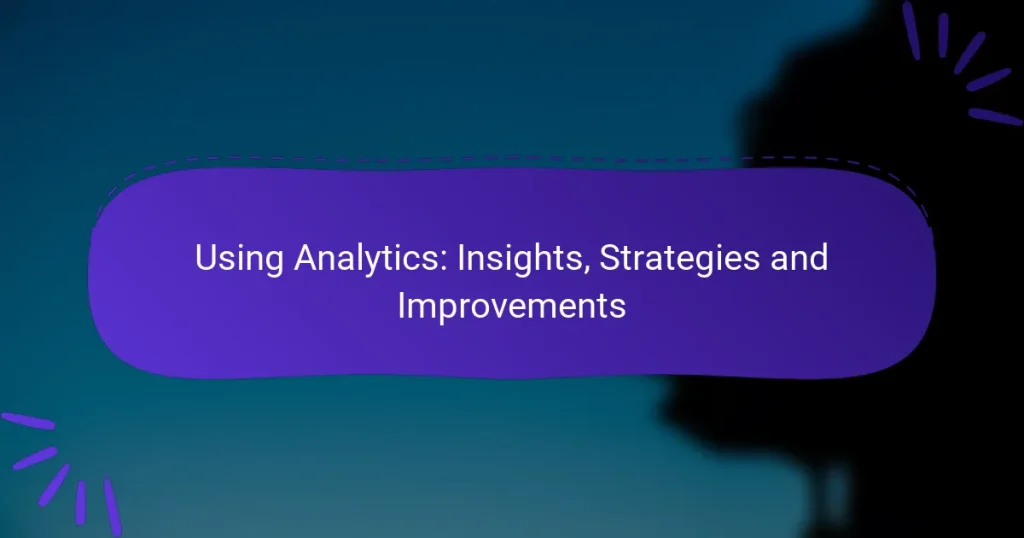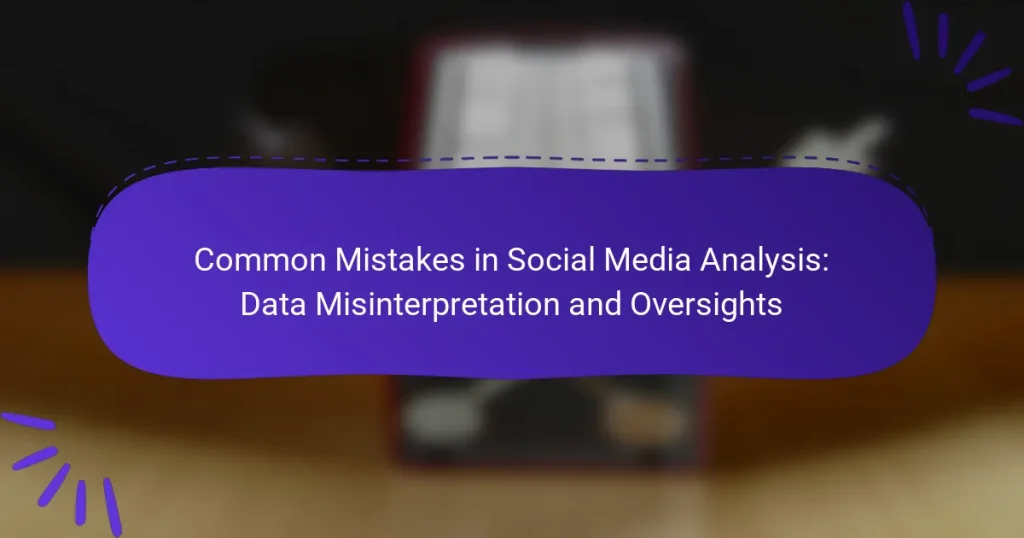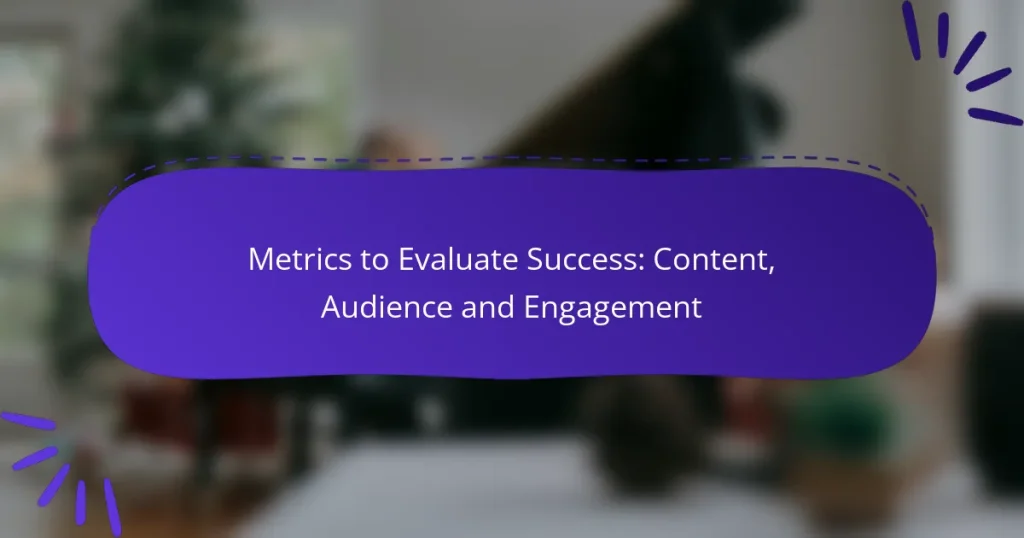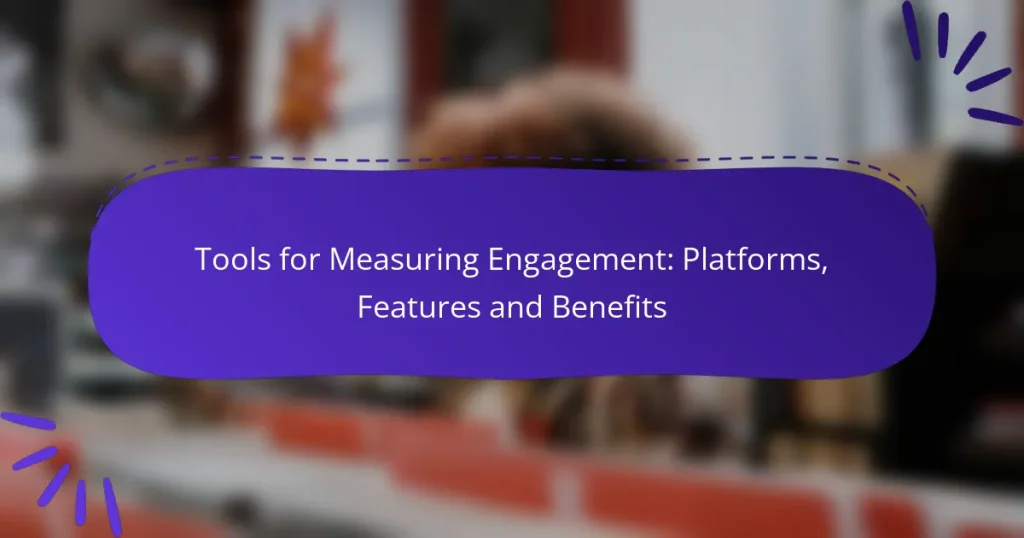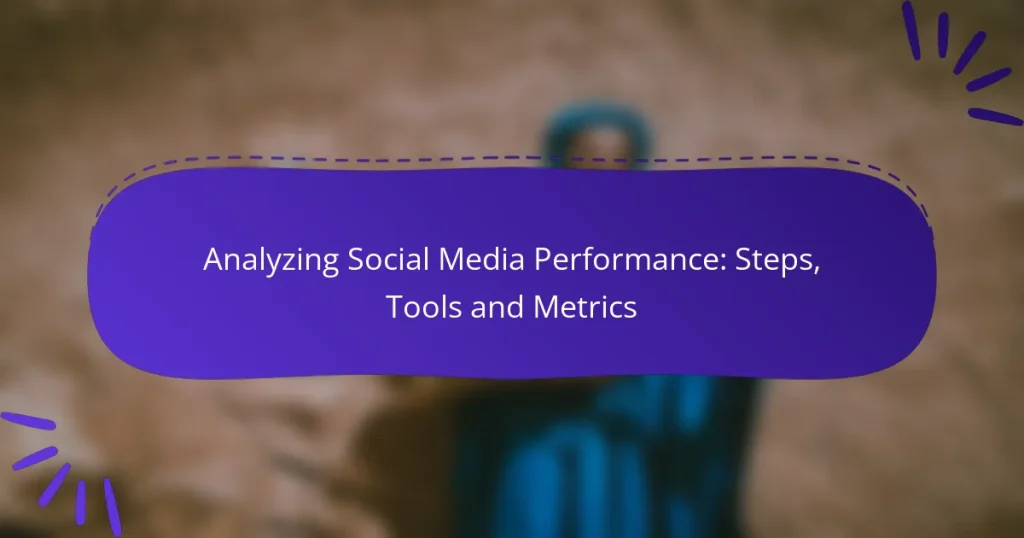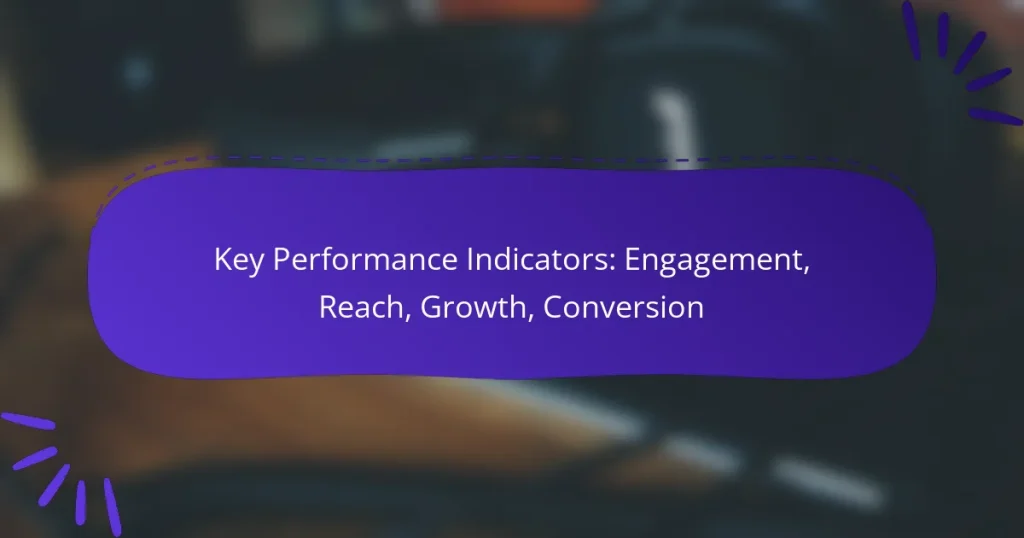Social media promotion is essential for bands looking to expand their reach and connect with fans. By utilizing analytics and metrics, bands can gain valuable insights into audience behavior and engagement, allowing them to tailor their content effectively. Focusing on key metrics such as follower growth, engagement rates, and conversion rates enables bands to refine their strategies and foster a loyal fan base.
Common Mistakes in Social Media Analysis: Data Misinterpretation and Oversights
Metrics to Evaluate Success: Content, Audience and Engagement
Tools for Measuring Engagement: Platforms, Features and Benefits
Analyzing Social Media Performance: Steps, Tools and Metrics
Key Performance Indicators: Engagement, Reach, Growth, Conversion
Setting Up Goals: Tracking, Progress and Campaign Success
How can bands use social media analytics for promotion?
Bands can leverage social media analytics to enhance their promotional strategies by understanding audience behavior and engagement. By analyzing metrics, they can tailor their content and outreach efforts to maximize visibility and interaction.
Track engagement metrics
Engagement metrics, such as likes, shares, comments, and saves, provide insight into how well content resonates with the audience. Bands should regularly monitor these metrics to identify which posts generate the most interaction.
For effective tracking, consider using tools like Facebook Insights or Instagram Analytics, which offer detailed reports on engagement rates. Aim for a consistent increase in engagement over time to gauge the effectiveness of promotional strategies.
Analyze audience demographics
Understanding audience demographics helps bands tailor their content to specific groups. Key demographic data includes age, gender, location, and interests, which can inform decisions on content style and messaging.
Utilize social media analytics tools to gather demographic information. For instance, if a band finds that a significant portion of their audience is aged 18-24, they might focus on trends popular within that age group to enhance relatability.
Measure content performance
Content performance metrics indicate how well different types of posts perform. Bands should assess which formats—such as videos, images, or live streams—drive the most engagement and reach.
Regularly review performance data to identify trends. For example, if videos consistently outperform static images, bands should consider increasing their video content to maintain audience interest.
Optimize posting times
Posting times significantly impact engagement levels. Bands should analyze when their audience is most active and schedule posts accordingly to maximize visibility.
Experiment with different posting times and track engagement metrics to find the optimal schedule. Generally, evenings and weekends tend to yield higher engagement, but this can vary by audience and platform.
Identify top-performing platforms
Not all social media platforms yield the same results for every band. Identifying which platforms generate the most engagement and reach is crucial for effective promotion.
Use analytics to compare performance across platforms like Instagram, Facebook, and TikTok. Focus efforts on the platforms that deliver the best results, reallocating resources from less effective channels to enhance overall promotional effectiveness.
What key metrics should bands focus on?
Bands should concentrate on four key metrics: follower growth rate, engagement rate, click-through rate, and conversion rate. These metrics provide insights into audience interaction and the effectiveness of promotional efforts, helping bands refine their social media strategies.
Follower growth rate
The follower growth rate measures how quickly a band’s social media following increases over time. It is calculated by taking the number of new followers gained during a specific period and dividing it by the total followers at the beginning of that period, then multiplying by 100 to get a percentage.
A healthy growth rate typically ranges from 5% to 10% monthly, depending on the band’s activity and promotional efforts. Bands can boost this rate by consistently posting engaging content and collaborating with other artists or influencers.
Engagement rate
Engagement rate reflects how actively followers interact with a band’s content, including likes, comments, shares, and saves. This metric is calculated by dividing the total engagement actions by the total number of followers, then multiplying by 100 to express it as a percentage.
A good engagement rate for bands usually falls between 1% and 5%. To improve engagement, bands should encourage audience participation through questions, polls, and interactive content, ensuring they respond to comments to foster a community feel.
Click-through rate
Click-through rate (CTR) indicates the percentage of followers who click on a link shared by the band, such as a new song or merchandise. It is calculated by dividing the number of clicks by the total impressions (or views) of the post, then multiplying by 100.
A typical CTR for social media posts ranges from 0.5% to 3%. Bands can enhance their CTR by using compelling calls-to-action and visually appealing images or videos that entice followers to click through to their content.
Conversion rate
The conversion rate measures the percentage of users who take a desired action after clicking on a band’s link, such as purchasing a ticket or signing up for a newsletter. It is calculated by dividing the number of conversions by the total number of clicks, then multiplying by 100.
A healthy conversion rate for social media campaigns is often around 2% to 5%. To boost this rate, bands should ensure their landing pages are user-friendly and relevant to the content shared on social media, providing clear value to the audience.
How can bands improve their social media strategy?
Bands can enhance their social media strategy by focusing on data-driven decisions, engaging authentically with their audience, and leveraging partnerships. By analyzing metrics and adjusting tactics accordingly, bands can increase their reach and foster a loyal fan base.
Utilize A/B testing
A/B testing allows bands to compare two versions of content to determine which performs better. For instance, a band might test two different images or captions for a post to see which garners more engagement. This method can lead to more effective content strategies by identifying what resonates with followers.
When conducting A/B tests, ensure that you only change one variable at a time to accurately assess the impact. Aim for a sample size that reflects your typical audience engagement to obtain reliable results.
Engage with followers
Engaging with followers is crucial for building a dedicated fan base. Responding to comments, asking questions, and creating polls can foster a sense of community and encourage more interaction. Regularly acknowledging fans’ contributions can enhance loyalty and increase visibility through social sharing.
Consider setting aside time each week specifically for interacting with fans. This consistent engagement can lead to organic growth as followers feel valued and more likely to share your content.
Collaborate with influencers
Collaborating with influencers can significantly expand a band’s reach. Influencers can introduce your music to their established audiences, potentially leading to new fans. Choose influencers whose brand aligns with your music style to ensure authenticity and relevance.
When approaching influencers, offer clear value in the collaboration, such as exclusive content or giveaways. This mutual benefit can create a more compelling partnership that resonates with both audiences.
Leverage user-generated content
User-generated content (UGC) is an effective way for bands to engage their audience while showcasing their community. Encouraging fans to share their experiences, such as concert photos or covers of your songs, can create a sense of ownership and pride among followers.
To leverage UGC, create specific hashtags for fans to use when posting about your music. Regularly feature this content on your official channels to acknowledge fans and encourage more participation. This strategy not only boosts engagement but also enriches your content library with authentic fan interactions.
What tools can bands use for social media analytics?
Bands can utilize various social media analytics tools to track their performance, audience engagement, and content effectiveness. These tools provide insights that help bands refine their marketing strategies and connect better with their fans.
Hootsuite
Hootsuite is a comprehensive social media management platform that offers robust analytics features. Bands can monitor engagement metrics across multiple platforms, schedule posts, and analyze audience demographics. Its user-friendly dashboard allows for easy tracking of performance over time, making it a valuable tool for bands aiming to enhance their online presence.
Consider using Hootsuite’s reporting features to generate weekly or monthly performance summaries. This can help identify which posts resonate most with fans and guide future content strategies.
Sprout Social
Sprout Social provides in-depth analytics and reporting capabilities tailored for social media marketing. Bands can track engagement rates, follower growth, and post performance across various channels. The platform’s social listening tools also allow bands to monitor brand mentions and audience sentiment, providing a holistic view of their online reputation.
Utilizing Sprout Social’s competitor analysis feature can help bands understand their position within the music industry. This insight can inform promotional strategies and help identify potential collaboration opportunities.
Google Analytics
Google Analytics is primarily known for website tracking but can also be beneficial for bands promoting their music online. By linking social media campaigns to a website, bands can analyze traffic sources, user behavior, and conversion rates. This data is crucial for understanding how social media efforts translate into website visits and fan engagement.
To maximize Google Analytics, set up goals to track specific actions, such as music downloads or newsletter sign-ups. This will provide clearer insights into the effectiveness of social media promotions.
Buffer
Buffer is a straightforward social media scheduling tool that includes basic analytics features. Bands can plan and publish posts while tracking engagement metrics like likes, shares, and comments. Its simplicity makes it an excellent choice for bands just starting with social media promotion.
Using Buffer’s analytics, bands can experiment with posting times and content types to find the most effective strategies. Regularly reviewing these metrics can help refine the overall social media approach and improve fan interaction.
What are the prerequisites for effective social media promotion?
Effective social media promotion requires a clear strategy, understanding of your target audience, and the right tools for analytics. These elements help bands create engaging content and measure its impact on their audience.
Define target audience
Defining your target audience is crucial for successful social media promotion. This involves identifying the demographics, interests, and behaviors of the people most likely to engage with your music.
Consider factors such as age, location, and musical preferences. For instance, if your band plays indie rock, your audience may primarily consist of young adults aged 18-30 who enjoy live music and local events.
Utilize social media insights and analytics tools to gather data on your followers. This information can guide your content creation and help you tailor your promotions to resonate with your audience effectively.
